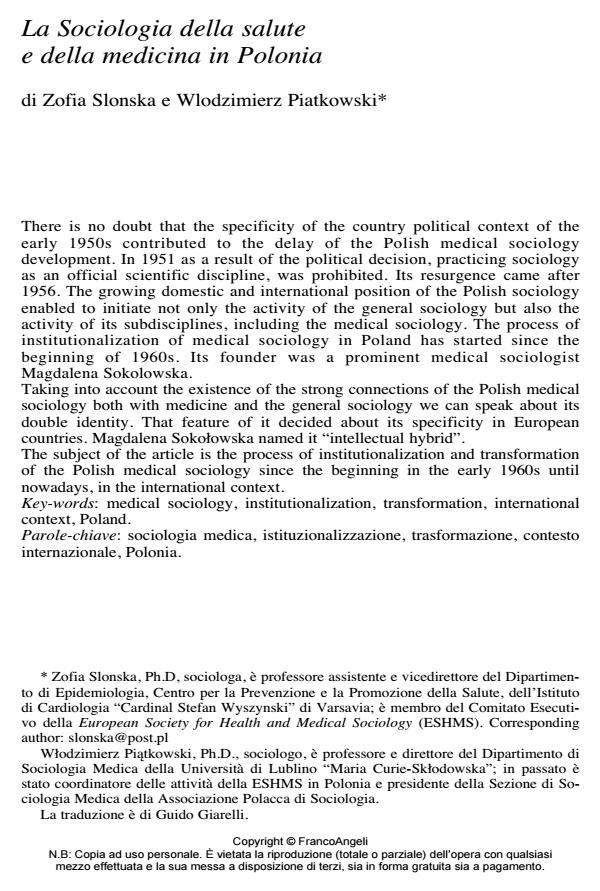La Sociologia della salute e della medicina in Polonia
Journal title SALUTE E SOCIETÀ
Author/s Zofia Slonska, Wlodzimierz Piatkowski
Publishing Year 2012 Issue 2012/2IT
Language Italian Pages 16 P. 79-94 File size 128 KB
DOI 10.3280/SES2012-002006
DOI is like a bar code for intellectual property: to have more infomation
click here
Below, you can see the article first page
If you want to buy this article in PDF format, you can do it, following the instructions to buy download credits

FrancoAngeli is member of Publishers International Linking Association, Inc (PILA), a not-for-profit association which run the CrossRef service enabling links to and from online scholarly content.
There is no doubt that the specificity of the country political context of the early 1950s contributed to the delay of the Polish medical sociology development. In 1951 as a result of the political decision, practicing sociology as an official scientific discipline, was prohibited. Its resurgence came after 1956. The growing domestic and international position of the Polish sociology enabled to initiate not only the activity of the general sociology but also the activity of its subdisciplines, including the medical sociology. The process of institutionalization of medical sociology in Poland has started since the beginning of 1960s. Its founder was a prominent medical sociologist Magdalena Sokolowska. Taking into account the existence of the strong connections of the Polish medical sociology both with medicine and the general sociology we can speak about its double identity. That feature of it decided about its specificity in European countries. Magdalena Sokolowska named it "intellectual hybrid". The subject of the article is the process of institutionalization and transformation of the Polish medical sociology since the beginning in the early 1960s until nowadays, in the international context.
Keywords: Medical sociology, institutionalization, transformation, international context, Poland.
Zofia Slonska, Wlodzimierz Piatkowski, La Sociologia della salute e della medicina in Polonia in "SALUTE E SOCIETÀ" 2IT/2012, pp 79-94, DOI: 10.3280/SES2012-002006